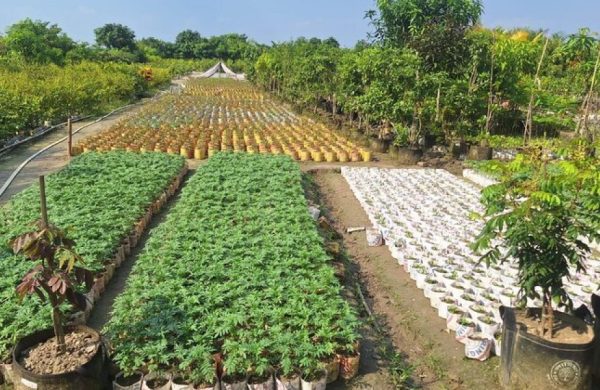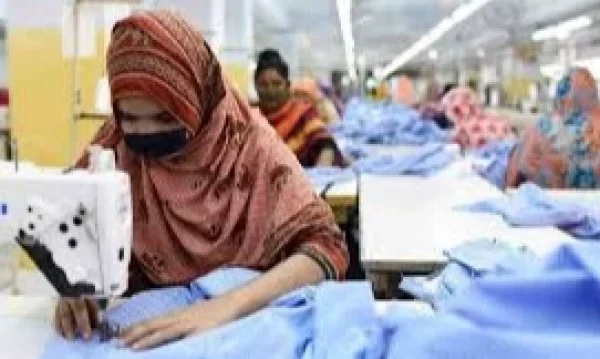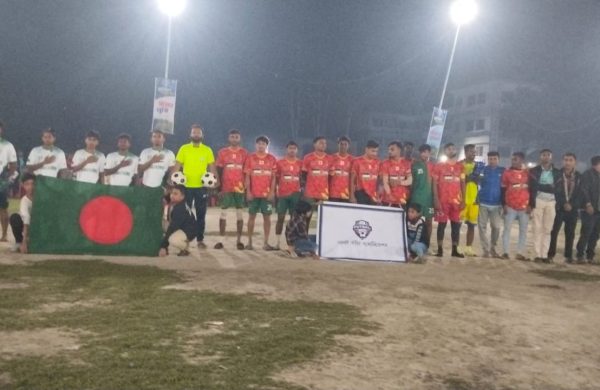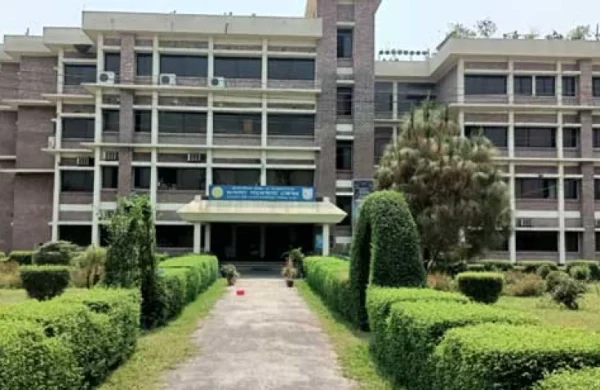Who bankrupted our strength?
- Update Time : Saturday, November 15, 2025
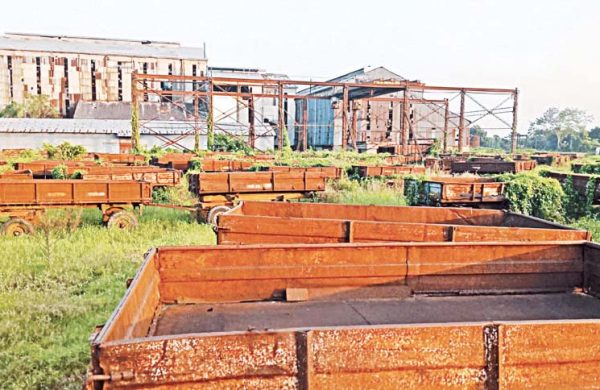
TDS Desk:
It was December 2, 2020, during the COVID-19 pandemic, and the sugarcane farmers in northern Bangladesh were preparing for harvest. The sugarcane fields were full of standing crops, ready to be collected and transported to the mill gate for crushing. Suddenly, a government announcement declared that six out of the fifteen state-owned sugar mills must suspend their operations. Farmers found it hard to believe whether this was true or false. The news left millions of people across six districts of North Bengal stunned and bewildered.
These sugar mills had formed the economic backbone of North Bengal since the British period. Since British colonial times, these mills have catalysed migration and economic activity in the region. Before the sugar mills were built, the region did not have any significant economic base. To attract migrant workers, the mill owners had to build schools, mosques, and hospitals, and allocate land around farms for living. Railways were laid to facilitate transportation, and various incentives were provided to encourage sugarcane cultivation. With this development, the region could export sugar after meeting local consumption.
In the 1970s, all of the sugar mills were nationalised. At that time, the government used to offer a low price for sugarcane. As a result, producing jaggery instead of supplying sugarcane was more profitable. Farmers shifted their focus to jaggery production. Farmers found it more profitable to produce jaggery instead of supplying their sugarcane to the mills. In the 1970s, farmers were even shot at to force them to supply sugarcane to the mills, resulting in the death of a young farmer. Later, the government gradually increased sugar prices, restoring farmers’ interest in cultivating sugarcane, leading to increased supply to mills and profit for the industry. However, this prosperity was short-lived.
When mills couldn’t pay farmers on time, as the government delayed payment because of its inefficient process of disbursing money, farmers’ interest in supplying sugarcane declined again, and mills faced losses. The following year, poor payments and reduced crop yields caused supply to drop further, especially in years when market prices were low, prompting farmers to turn to jaggery production again. However, despite the ups and downs of profitability since the 1970s, some mills used to consistently make profit while others made profit only sporadically.
The capacity of Bangladesh’s state-owned sugar mills has never been sufficient to meet the entire country’s demand. Sugar has always had to be imported to supplement domestic production. Until 2002, the Bangladesh Sugar and Food Industries Corporation (BSFIC) was responsible for both producing and importing sugar. Due to government control, BSFIC had been able to regulate the price of sugar within the country for a long time. It was because of these mills that a widespread marketing network was maintained, enabling fair distribution at controlled prices and protecting consumer interests.
In 2002, liberalisation of the sugar industry began with the authorisation of private imports. From 2004 onward, refineries were required to export 50% of their refined sugar as a condition of getting permission to enter the market. However, this condition has not been met. Moreover, when importing surplus sugar, two main arguments are presented: first, that private refineries will import extra raw sugar, refine it, and export it to earn foreign currency; second, that these private refineries will release the excess stock of sugar to control market prices during times of need. But in reality, these private refineries were not exporting to foreign markets at all. Instead, they started to sell the sugar within the local market, posing a threat to the market of the fifteen domestic mills. Meanwhile, the unsold stock of sugar in the state-owned sugar mills continued to increase.
Since 2002, when the import of sugar was liberalised, the government has lost control over sugar prices. By the time the government attempted to limit imports again in late 2015 by imposing tariffs (duty), private importers had already established such a strong grip on the market that the government could not control their imports. In other words, after simplifying the import process, excess imports empowered private refineries indiscriminately. It is evident that the government, unable to regulate importers, shifted the burden onto consumers. As a result, the price of sugar increased from Tk 60 in 2020 to Tk 160 in 2022, within just two years.
This shift is rooted in the global economic trend of neoliberal policies since the 1980s—privatisation and market liberalisation—implemented in Bangladesh without strengthening state-owned industries. While India maintained support for its sugar mills, Bangladesh’s approach weakened its industry, leading to inefficiencies and mounting losses in state mills. Despite laws to protect domestic industries, the government often covered losses with loans instead of strategic investments, causing debts to swell and reducing efficiency. These state mills struggled intensely to survive in the face of fierce competition. The gap between production costs and market prices kept widening further.
The government’s failure to develop a cohesive modernisation plan and to support existing mills transformed them into unprofitable, relic assets. The properties of these mills became attractive targets for foreign investors, leading to proposals for industrial parks and export zones. However, protests, especially by indigenous communities like the Santals, halted many plans. Even recent attempts to reinvest and revitalise mills, such as an MoU with a private company in 2024, faced suspicion and rejection by authorities.
It is important to note that, according to the Public Corporations Ordinance of 1986, sugar and food industries were required to sell sugar at government-fixed prices. According to the ordinance, if the mills produced at a cost higher than the price, the government was expected to cover the resulting loss, which is termed the trade gap. This was a way to protect both the industry and consumer rights. However, for many years, instead of providing this trade gap (the difference between the sale price and production cost), the government guaranteed loans instead. This caused the debt of the Food and Sugar Industries Corporation to increase continuously. Every year, the interest payments on these loans amounted to around 40% of the production costs; in some mills, this interest component was even higher.
Newspaper reports over the years consistently highlighted losses in the mills, gradually creating public perception that corruption and mismanagement were the root causes of these losses. They completely overlooked the fact that interest payments were one of the main sources of escalating costs. While corruption and mismanagement certainly existed, the bigger problem was the lack of a long-term, comprehensive plan on which to base modernisation efforts. With proper investment, these mills could have been upgraded, producing not only sugar but also various other products from by-products, making the Bangladesh Sugar and Food Industries Corporation profitable.
Every government adopted the same policy stance—delaying payments on the trade deficit, avoiding new investments, and encouraging a gradual shutdown process. Despite such adverse conditions, some mills with better performance were still operational. However, there was no serious discussion or strategy on how to reduce losses. Instead, the government kept justifying the closure of these mills by citing their losses, using that as the main excuse.
All the infrastructure—properties, central locations, and the vast assets of these mills—made them attractive sites for foreign and local investors. Over time, there were attempts to utilise these lands for Special Economic Zones (SEZs). For example, in 2016, plans were made to establish an SEZ on the farmland of Bagda Farm in Gaibandha. However, due to fierce protests by the Santal community, the project was cancelled. Since 2020, investors from various countries have shown interest in investing in the mills. Several discussions took place, but ultimately, no proactive steps were taken.
In 2024, the government signed an MoU with the S. Alam Group to improve the management and profitability of the mills. The strategy was to show the MoU as a guarantee for securing loans from S. Alam’s banks and then to invest in modernising the mills. There were serious doubts about whether this was truly the goal of S. Alam. The Bangladesh Sugar and Food Industries Corporation was particularly suspicious of this arrangement, leading to the MoU’s cancellation shortly after August 5, 2024.
Following Sheikh Hasina’s departure in 2024, farmers’ and workers’ organisations took initiatives to reopen the mills. The Ministry of Industries formed a task force, including officials from the Bangladesh Sugar and Food Industries Corporation, experienced engineers, chemists, agronomists, researchers, labour leaders, farmers, and indigenous representatives, appointing a joint convenor. Based on their recommendations, the government withdrew the suspension of crushing in the mills and planned to gradually reopen six mills. They submitted a three-year budget proposal for the two most promising mills (Shetabganj and Shyampur) to the Ministry of Industry, which was then sent to the Ministry of Finance.
In the first year, the plantation budget for both mills was Tk 17 crore, but the money was not released. Despite this, farmers around the Setabganj and Shyampur mills were motivated anew to grow sugarcane. Surveys conducted at the beginning of 2025 with nearly a thousand farmers in these areas expressed their willingness to cultivate sugarcane if the mills reopened. Now, more than a year later, the Ministry of Finance has still not provided any explanation for withholding the funds. Interestingly, the Ministry of Industry has expressed the view that these mills are unprofitable.
Sources within the Ministry of Industry reveal that, since the government is no longer interested in investing, they are expecting foreign investments. Accordingly, the Bangladesh Investment Development Authority (BIDA) is in talks with foreign companies. Earlier, a feasibility study was conducted with Thailand’s Sutech, but it was intended not for reopening the mills but for shutting down fifteen mills and investing only in three, consolidating operations in just three districts across North Bengal. This means farmers would face great hardship supplying to distant mills, as the quality of their sugarcane diminishes over long transport. The close relationships farmers and local communities have built with each mill—through schools, mosques, hospitals—would be lost. Authorities carried out feasibility studies and made proposals without prior community consultation, disregarding public interest.
Before market liberalisation, the Bangladesh Sugar and Food Industries Corporation (BSFIC) had control over the sugar price. After privatisation, price control shifted entirely to private refineries, which grew stronger while state mills weakened through competition. Today, private refiners produce approximately 3.2 million metric tonnes of sugar annually, importing low-quality, health-damaging raw-sugar that dominates the local market. Meanwhile, state-owned mills, despite being profitable in some cases, have been pushed into greater challenges.
After the mass uprising, when new hope sparked among the people, and as workers and farmers once again looked towards the government to revive the economy through the sugar industry, it became apparent that the old system and development philosophy remained intact.
Only a few new faces appeared, with no connection to farmers or workers. Their sole purpose was to secure political power at any cost. The law enacted in 1986, meant to protect local industries, ultimately failed as successive governments chose to cover losses with loans rather than strategic reform, leaving Bangladesh’s sugar industry in a vulnerable state. The ongoing cycle of promises, fake development rhetoric, and failure to support local industry reflects a broader systemic neglect.
Before any country liberalises trade or decides to privatise, it must first ensure that its own industries have attained sufficient capacity. Pushing an industry into competition before it is ready can crush its confidence forever. It is like, before teaching a child to run, asking him or her to win an Olympics marathon. If they fail, we label them as incapable of running. Similarly, creating hostile environments for industries while hoping for profit is unrealistic.
Our country is about to graduate from a Least Developed Country (LDC) to a middle-income country, yet we lag far behind in every aspect of national capacity. While discussions are going on to reform following the July Charter, economic reforms remain the most neglected issue. Additionally, a Sustainable Development Task Force was formed after the July uprising, but it offers no proposals for capacity development of Bangladesh’s state-owned enterprises. Politicians and celebrity policy-makers often publicly claim their policies would make Bangladesh another Singapore, Malaysia, or China. But they don’t see that most East Asian countries have strengthened their state enterprises, improved their technological, managerial, and institutional capacities, built their own economic foundations, and then opened themselves to global competition.
Our policymakers show very little interest in leveraging the country’s resources through minimal investments to develop industries. They equate development solely with foreign investment. But to move away from this flawed thinking, we need to understand Bangladesh’s industrial history. We must question why, after acquiring so much land for Special Economic Zones over the years, foreign investors are still reluctant to invest. Instead of lamenting the lack of foreign investment, we need to identify and strengthen the areas where our own strengths lie. The state-owned sugar mills are our strength if we really can utilise the existing resources.



